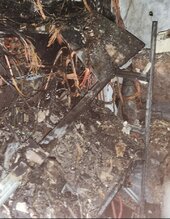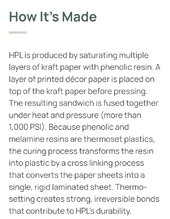Zwy
Emperor Of Solar
Did you have web integration enabled?All data went up in flames (sd card in the bms)
Did you have web integration enabled?All data went up in flames (sd card in the bms)
you know Hedges, that is one of the best theories to date on why the Fire Inspector would call out the fuse.... Never occurred to me that the Fire Inspector might be a good Dude.But maybe the inspector is doing OP a favor by pointing at a commercial (UL listed?) part as the cause. He can say that with a straight face, regardless of the environment provided.
Lots of discussion of fuses on this thread but I didn’t see any ask about the cell compression used.
He did have compression. The typical threaded rods and end plates.
Yeah this doesn't seem like suitable material for battery shelves. Look at how the material has basically disappeared in the fire. One wonders how things would have faired with his original steel shelving unit prior to his expansion. Other shelves and strings collapsing/pancaking down to strings below wouldn't have helped.HPL is reated to 100°C as far i have seen, maybe your shelf was not stable enough?
there is a lot of weight on this


Guys, please, yall looking at things way too far. The shelves were fine, the fire fighters have torn everything apart to drag all the cells outside. I dont even know what is being discussed here.I did find this regarding flammability:
Seems to indicate certain versions won't sag under fire up to 400 degrees but I don't think they tested with hundred of pounds of batteries on top as a shelving unit, moreso for floors, walls and ceilings.
View attachment 213032
this would be much better for fire protectionOne wonders how things would have faired with his original steel shelving unit
What is being discussed is how to not have this happen to us. There are many variables in adding batteries to a system. We all just want to eliminate the variables that could lead to what happened to you.Guys, please, yall looking at things way too far. The shelves were fine, the fire fighters have torn everything apart to drag all the cells outside. I dont even know what is being discussed here.
Because this^I worry about compressed cells on a shelf that sags in the middle, it squeezes the cells at the top like an accordion.
The rack itself was steel and rated for 300 kg/shelf if i remember correct. There was little to no sagging. The hpl i just added as divider between the system and metal rack.Because this^
Composite shelves simply do not hold that much weight for extended periods of time. They can/will/do sag over time.
That style shelving does not support the center and whatever material used is too thin for span/weight.
Ideally you would fuse everything, but the SOK does have a circuit breaker that should be able to isolate the unit from the system automatically so the string-level fuse becomes supplemental protection.I read the entire thread and have an uneducated question:
I currently have 5 sok lifepo4 51.2 100ah units paralleled to a busbar, then a 125a class T fuse before the inverter. It seems a better practice is to have 5 class T fuses between each battery and the busbar.
Assuming I'm correct so far, if I were to perform this upgrade, would I leave the current fuse in place and add the other 5, or would the current fuse become unnecessary or even counterproductive?
Thanks everyone for what you do and for OP sharing his nightmare so that it may help others.
Ok, so it was metal beams with a metal sheet for the shelf (not particle board or any other material) with the HPL on top of/in addition to the original metal shelf?The rack itself was steel and rated for 300 kg/shelf if i remember correct. There was little to no sagging. The hpl i just added as divider between the system and metal rack.
So I would leave the class t in place (on the positive between the bus bar and the inverter?) that will protect that wire in case something fails badly in the inverter.I read the entire thread and have an uneducated question:
I currently have 5 sok lifepo4 51.2 100ah units paralleled to a busbar, then a 125a class T fuse before the inverter. It seems a better practice is to have 5 class T fuses between each battery and the busbar.
Assuming I'm correct so far, if I were to perform this upgrade, would I leave the current fuse in place and add the other 5, or would the current fuse become unnecessary or even counterproductive?
Thanks everyone for what you do and for OP sharing his nightmare so that it may help others.
Unfortunately the OP does not seem to have photos of his final configuration before the fire. Photos of several years ago from his old threads are not informative if major changes were made. The 1 photo posted of after the fire is insufficient to establish much. His description of things can be a bit easy to misinterpret. He never stated there was metal shelves only that it was a steel rack. Rack is the frame and may not be a shelf.Ok, so it was metal beams with a metal sheet for the shelf (not particle board or any other material) with the HPL on top of/in addition to the original metal shelf?
My apologies if I misunderstood what you have. I see a ton of people using shelves where the beams only go around the outside and a board lay in the middle, nothing supporting the center of the load. There is another post on the forum where a shelf like that likely collapsed.
300kg is not a lot. Even some of the particle board ones from U-Line are rated at 800lbs. They are also rating it in "Uniform Distributed Load" assuming the max weight is the exact footprint of the shelf. It's important that people don't make this mistake, this is the reason for my post.
I'm definitely not trying to be critical of your build, I'd say it's likely in the top 10 for cleanest install, but... sh*t happens. You seemingly had a cascade of failures, and all these bits of information are critical to system design and safety. Let's get it out there for others to learn.
I think the last big fire that was discussed (Germany, Poland?) ended up being a basen green commercial rack style batteryI gotta say, this thread has been the exception out of all the fire threads on here I've read. OP's installation looked very professional, to my untrained eye, nothing immediately stuck out as bad. The other threads have had stuff like alligator clips everywhere, cells sitting on particleboard, etc.
Glad OP had insurance and that no one was hurt.
I remember one of Will's recent videos was showing some of the modern powerwall-style batteries seemed to have some kind of fire suppression system built in? If those work at all, I could see the value in paying extra for that.
I am not in any way implying OP did anything wrong here, because I'm too uneducated to be able to tell, but I do notice that these fire threads often have the in-common factor of a DIY battery build as opposed to a prebuilt. Just makes me further shy away from trying it.
I gotta say, this thread has been the exception out of all the fire threads on here I've read. OP's installation looked very professional, to my untrained eye, nothing immediately stuck out as bad. The other threads have had stuff like alligator clips everywhere, cells sitting on particleboard, etc.
Glad OP had insurance and that no one was hurt.
I remember one of Will's recent videos was showing some of the modern powerwall-style batteries seemed to have some kind of fire suppression system built in? If those work at all, I could see the value in paying extra for that.
I am not in any way implying OP did anything wrong here, because I'm too uneducated to be able to tell, but I do notice that these fire threads often have the in-common factor of a DIY battery build as opposed to a prebuilt. Just makes me further shy away from trying it.
No, we only know that the fuse blew and arced, and that the fire inspector said that was the cause.Do we know 100% that the fire was started by the batteries / associated wiring / fuses, apart from what the fire department person said?


